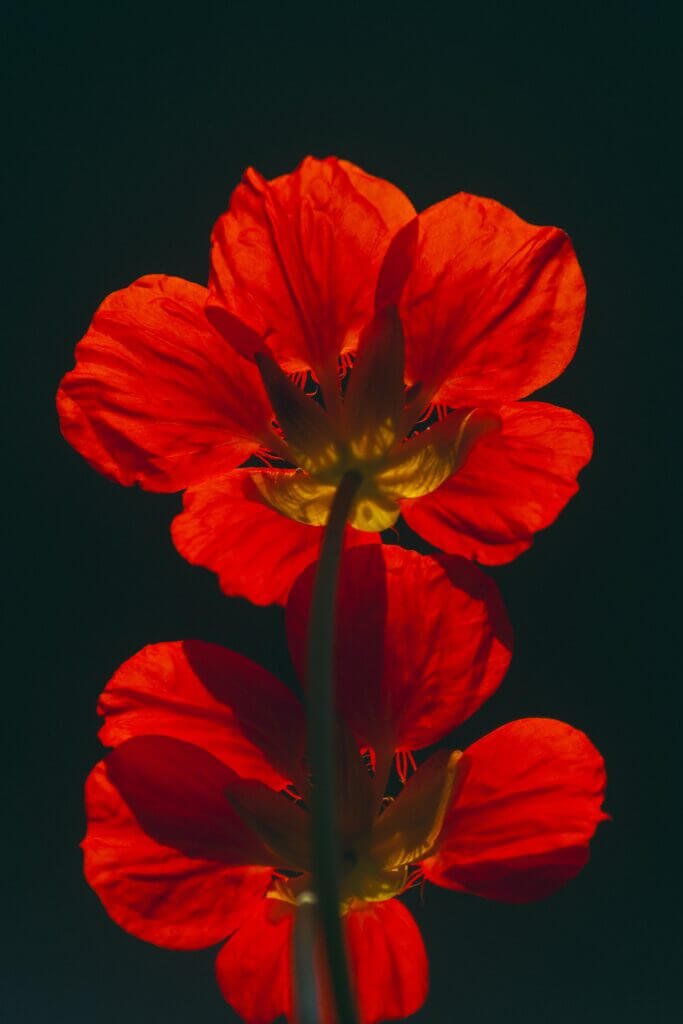Are you interested in creating your own urban garden without breaking the bank? Look no further! In this article, we will show you how to create a thrifty urban garden that is not only cost-effective but also beautiful and sustainable. With a few simple tips and tricks, you can transform any small space into a flourishing oasis where you can grow your own fresh produce and enjoy the beauty of nature right outside your doorstep. Let’s get started on this exciting gardening journey together!

Choosing the Right Location
When creating a budget-friendly urban garden, one of the first things you need to consider is the location. The success of your garden greatly depends on choosing the right spot.
Consider available space
Take a good look around your urban space and evaluate the available space for your garden. You might have a small balcony, a rooftop, or even just a windowsill. It’s important to make the most of the space you have and choose plants that can thrive in those conditions. If you have limited space, consider utilizing vertical gardening techniques to maximize the area you can use.
Evaluate sunlight exposure
Before deciding on the location, it’s crucial to assess the sunlight exposure in the chosen space. Most plants require at least 6 hours of direct sunlight daily to thrive. Observe how much sunlight your chosen location receives during the day and choose plants accordingly. If your space doesn’t receive much sunlight, don’t despair! There are still plenty of shade-tolerant plants that can flourish in such conditions.
Assess soil quality
The quality of the soil is another important factor to consider. Some urban environments may have poor soil, but don’t let that discourage you. You can always opt for container gardening and bring in your own soil. However, if you prefer to utilize the existing soil, it’s crucial to assess its quality. Consider getting a soil test kit to determine the pH level and nutrient content. Based on the results, you can amend the soil to ensure it provides the necessary nutrients for your plants to grow and thrive.
Deciding on Container Gardening
Container gardening is an excellent option for budget-friendly urban gardens. It allows you to have complete control over the soil and growing conditions of your plants.
Select suitable containers
When choosing containers for your garden, ensure they are suitable for the plants you plan to grow. Different plants have varying root depths, so it’s essential to select containers that provide enough space for root growth. Additionally, consider the material of the containers. Clay pots are popular for their breathability, but plastic containers are often more lightweight and durable.
Explore creative upcycling options
One of the great benefits of container gardening is that you can get creative with your containers. Look for items you already have or can repurpose, such as old buckets, crates, or even tires. Get creative and transform these items into unique planters. Not only will you save money, but you’ll also add a unique touch to your garden.
Ensure proper drainage
Proper drainage is essential for container gardening. Without it, excess water can accumulate and cause root rot. To ensure your containers have proper drainage, drill holes in the bottom. Alternatively, you can use a layer of gravel or broken pottery to help with drainage. Additionally, consider placing a saucer beneath each container to catch any excess water.

Starting from Seeds vs. Buying Seedlings
When it comes to growing your plants, you have two options: starting from seeds or buying seedlings. Both have their advantages and it mostly depends on your time, patience, and budget.
Evaluate time and patience
Starting your garden from seeds requires more time and patience compared to buying seedlings. Seeds take time to germinate and require proper care, such as watering and providing adequate light. If you have the time and patience to nurture your plants from the very beginning, starting from seeds can be a rewarding and cost-effective option.
Calculate cost-effectiveness
In terms of cost-effectiveness, starting from seeds is often the more budget-friendly choice. Seeds are generally cheaper than buying established seedlings. By starting from seeds, you can sow a larger quantity of plants for a fraction of the cost. This is particularly beneficial if you have a limited budget and want to grow a wide variety of plants.
Consider variety availability
When you buy seedlings, you have a limited variety available to you, depending on the local nurseries or stores in your area. However, when starting from seeds, you have access to a vast selection of plant varieties, including heirloom and open-pollinated options. This allows you to experiment with different flavors, textures, and colors in your garden. So, if variety is important to you, starting from seeds might be the way to go.
Optimizing Soil and Fertilizer
The quality of the soil plays a vital role in the success of your budget-friendly urban garden. Optimizing the soil composition and providing proper nutrients is key to growing healthy plants. Here are some tips to consider.
Test and amend soil composition
Before planting, it’s essential to test the soil composition in your garden. You can purchase a soil testing kit or send a sample to a lab for analysis. The results will provide you with valuable information about the pH level, nutrient content, and any necessary amendments. Based on these results, you can make adjustments to ensure your soil provides an optimal environment for your plants to thrive.
Compost to nourish plants
Composting is a fantastic way to nourish your plants without spending much money. Begin by collecting kitchen scraps such as fruit and vegetable peels, coffee grounds, and eggshells. Add them to a compost bin or pile along with yard waste, such as grass clippings and leaves. Over time, this organic matter will decompose, creating nutrient-rich compost that can be added to your soil as a natural fertilizer.
Explore homemade organic fertilizers
In addition to compost, there are various homemade organic fertilizers you can make to provide your plants with essential nutrients. For example, as a nitrogen-rich fertilizer, you can mix coffee grounds with water and use it to water your plants. Another option is making a mixture of banana peels, eggshells, and water, which serves as a mineral-rich fertilizer. These homemade fertilizers are not only budget-friendly but also environmentally friendly.

Choosing Thrifty Plant Varieties
When selecting plants for your budget-friendly urban garden, it’s important to choose varieties that are not only productive but also suited to your available space and climate conditions.
Research plants suitable for tight spaces
If you have limited space in your urban garden, it’s essential to choose plants that are well-suited for small spaces. Look for compact or dwarf varieties that won’t overcrowd your garden. For example, cherry tomatoes, bush beans, or lettuce can thrive in tight spaces and still provide bountiful harvests. By selecting plants specifically tailored to your space, you can optimize productivity while saving on unnecessary resources.
Select high-yielding options
When you’re trying to be thrifty with your urban garden, it’s beneficial to choose plants that produce high yields. Opt for vegetable varieties that are known for their productivity, such as zucchini, cucumbers, or peppers. By selecting high-yielding options, you’ll get the most out of your garden and ultimately save money on groceries.
Consider heirloom or open-pollinated varieties
In addition to productivity, consider exploring heirloom or open-pollinated plant varieties. These varieties have not been hybridized, meaning their seeds can be saved for future use. By saving and replanting seeds from these plants, you can reduce the need to purchase seeds each year, making your garden even more budget-friendly. Plus, heirloom varieties often offer unique flavors and colors, adding diversity to your harvests.
Utilizing Vertical Gardening Techniques
Vertical gardening is a fantastic way to make the most of limited space in your budget-friendly urban garden. By going vertical, you can grow more plants in a smaller footprint.
Employ trellises and vertical structures
Trellises and vertical structures are great additions to your urban garden. They provide support for climbing plants such as cucumbers, beans, or tomatoes, allowing them to grow upward rather than sprawl across the ground. Vertical gardening not only maximizes space but also improves air circulation, reducing the risk of pests and diseases.
Experiment with hanging planters
If you’re looking to save even more space, consider hanging planters. These can be suspended from fences, balconies, or even the ceiling. Hanging planters are excellent for growing herbs, strawberries, or trailing flowers. They add a touch of greenery to unexpected spaces and free up ground space for other plants.
Grow vines and climbers
Vines and climbers are perfect candidates for vertical gardening. They can be trained to grow upward along trellises or any other vertical structure. Options like pole beans, indeterminate tomatoes, and cucumbers can thrive in vertical gardening systems. By growing these plants vertically, you’ll maximize space efficiency while enhancing the visual appeal of your garden.
Implementing Water-Saving Strategies
Water is a valuable resource, especially in urban environments. Implementing water-saving strategies not only helps conserve water but also reduces your water bill.
Collect rainwater for irrigation
One of the most cost-effective ways to water your urban garden is by collecting rainwater. Invest in a rain barrel or create your own using a large container. Place it under a downspout to capture rainwater from your roof. This collected rainwater can then be used to water your plants, reducing the need for tap water and saving you money on your water bill.
Opt for drought-tolerant plants
In a budget-friendly urban garden, choosing drought-tolerant plants is a wise decision. These plants have adapted to survive with minimal water, reducing your reliance on regular watering. Some examples of drought-tolerant plants include lavender, succulents, and ornamental grasses. By selecting these plants, you’ll not only save water but also ensure the success of your garden in times of drought.
Mulch to retain moisture
Mulching is a simple yet effective technique to retain moisture in your soil. By applying a layer of organic mulch, such as straw or wood chips, around your plants, you create a barrier that prevents water evaporation. This helps to keep the soil moist for longer periods, reducing the frequency of watering. Additionally, mulch suppresses weed growth, saving you time and effort in weed control.
Integrating Companion Planting and Crop Rotation
Companion planting and crop rotation are sustainable practices that can benefit your budget-friendly urban garden in multiple ways.
Improve pest and disease management
Companion planting involves growing specific plants together, taking advantage of their natural repellent or pesticidal properties. For example, planting marigolds alongside your vegetable crops can deter pests such as nematodes. By strategically placing plants to complement and protect each other, you can reduce the need for chemical pesticides, saving money and promoting a healthier garden ecosystem.
Sustainable soil fertility
Crop rotation is an effective technique to improve soil fertility without relying on synthetic fertilizers. By rotating crops each year, you prevent the buildup of pests and diseases that are specific to certain plants. Additionally, different plants have varying nutrient requirements, and crop rotation allows for balanced nutrient replenishment in the soil. This reduces the need for external fertilizers, making your urban garden more sustainable and cost-effective.
Efficient space utilization
Integrating companion planting and crop rotation is not only beneficial for pest and disease management but also enables efficient space utilization in your garden. By interplanting compatible plants and rotating crops, you can save space and maximize the overall productivity of your urban garden. This allows you to grow a wider variety of plants while maximizing the output of each square foot.
Introducing Beneficial Insects
Encouraging beneficial insects in your budget-friendly urban garden is an eco-friendly way to manage pests and increase the overall productivity of your plants.
Attract pollinators to increase yields
Pollinators play a crucial role in the reproduction of many plants, including fruits and vegetables. By attracting bees, butterflies, and other pollinators to your garden, you can significantly increase the yields of your crops. To attract these beneficial insects, plant a variety of flowering plants, such as bee balm, lavender, or sunflowers. These plants not only add beauty to your garden but also provide a food source for pollinators.
Natural pest control methods
In addition to pollinators, beneficial insects can also act as natural pest controllers. Ladybugs, lacewings, and hoverflies are just a few examples of insects that feed on common garden pests like aphids and caterpillars. By creating a welcoming habitat for these beneficial insects, you can reduce or eliminate the need for chemical pesticides. This not only saves money but also promotes a healthier and more balanced garden ecosystem.
Creating habitat for beneficial insects
To attract and support beneficial insects, it’s essential to provide them with a favorable habitat. Incorporate diverse plantings, including flowering plants, herbs, and grasses, that offer food and shelter for insects. Avoid using chemical pesticides, as they can harm both beneficial and harmful insects. By creating a garden that promotes biodiversity, you can naturally regulate pest populations and create a thriving ecosystem within your budget-friendly urban garden.
DIY Garden Tools and Equipment
Creating your own garden tools and equipment is not only a fun and creative way to save money but also helps reduce waste. You can repurpose household items and materials to fulfill various gardening needs.
Repurpose household items as tools
Look around your house and explore everyday items that can be repurposed as gardening tools. For example, plastic containers can be turned into scoops for potting soil or used as makeshift watering cans. Wooden pallets can be transformed into raised beds or vertical planters. Get creative and think outside the box – you’ll be amazed at the many ways ordinary items can be repurposed to assist your gardening endeavors.
Build raised beds inexpensively
Raised beds provide numerous benefits for urban gardens, such as improved drainage and accessibility. Building your own raised beds can be cost-effective and straightforward. Consider using inexpensive materials such as cinder blocks, wooden pallets, or even recycled plastic lumber. These materials can be easily sourced or repurposed, making your raised beds both thrifty and environmentally friendly.
Create homemade plant supports
Plants that grow upright, such as tomatoes or peppers, often require support to prevent them from toppling over. Instead of purchasing expensive metal cages or stakes, get creative and make your own plant supports. Bamboo sticks, discarded branches, or even old wire hangers can be repurposed to provide the necessary support. By creating your own plant supports, you save money while still ensuring your plants grow upright and healthy.
In conclusion, creating a budget-friendly urban garden is an exciting and rewarding endeavor. By carefully choosing the right location, deciding on container gardening, starting from seeds, optimizing soil and fertilizer, choosing thrifty plant varieties, utilizing vertical gardening techniques, implementing water-saving strategies, integrating companion planting and crop rotation, introducing beneficial insects, and making your own garden tools and equipment, you can achieve a thriving and cost-effective urban garden. So roll up your sleeves, get your hands dirty, and start creating your own thrifty urban garden today!


